
George William, of the Hohenzollern dynasty, was margrave and elector of Brandenburg and duke of Prussia from 1619 until his death. His reign was marked by ineffective governance during the Thirty Years' War. He was the father of Frederick William, the "Great Elector".
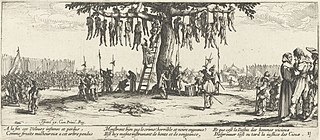
The Thirty Years' War was a conflict fought largely within the Holy Roman Empire from 1618 to 1648. Considered one of the most destructive wars in European history, estimates of total deaths caused by the conflict range from 4.5 to 8 million, while some areas of Germany experienced population declines of over 50%. Related conflicts include the Eighty Years' War, the War of the Mantuan Succession, the Franco-Spanish War, and the Portuguese Restoration War.

Axel Gustafsson Oxenstierna af Södermöre, Count of Södermöre, was a Swedish statesman. He became a member of the Swedish Privy Council in 1609 and served as Lord High Chancellor of Sweden from 1612 until his death. He was a confidant of King Gustavus Adolphus and then Queen Christina, of whom he was at first regent.

The Battle of Lützen was one of the most important battles of the Thirty Years War. It took place on 16 November 1632, between an Imperial army under Albrecht von Wallenstein and a combined Swedish-German army led by Gustavus Adolphus. Generally viewed as a narrow Swedish victory, the battle had both sides suffer heavy casualties and is now remembered chiefly for the death of Gustavus.

The Battle of Nördlingen took place on 6 September 1634 during the Thirty Years' War. A combined Imperial-Spanish force won a crushing victory over a Swedish-German army.

John George I was Elector of Saxony from 1611 to 1656.

The Peace of Prague, Pražský mír (Czech), Prager Frieden (German), signed on 30 May 1635, ended Saxony's participation in the Thirty Years War. The terms would later form the basis of the 1648 Peace of Westphalia.
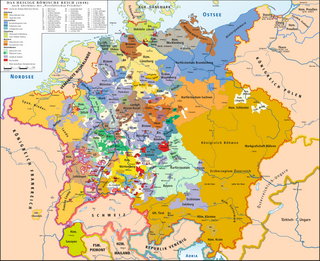
The Battle of Jankau, also known as Jankov, Jankow, or Jankowitz, took place in central Bohemia, on 6 March 1645. One of the last major battles of the 1618 to 1648 Thirty Years' War, it was fought between Swedish and Imperial armies, each containing around 16,000 men. The more mobile and better led Swedes under Lennart Torstensson effectively destroyed their opponents, commanded by Melchior von Hatzfeldt. However, by this stage of the war, the devastated countryside forced armies to spend much of their time trying to support themselves, and the Swedes were unable to take advantage.
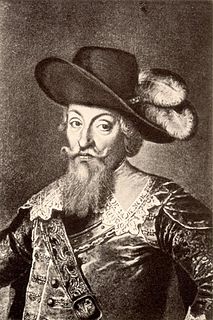
Johann or Hans Georg von Arnim-Boitzenburg was a German general. At different times during the Thirty Years' War, he was a Field Marshal for the Holy Roman Empire and its opponent the Electorate of Saxony. He also pursued various diplomatic tasks.
The Treaty of Hamburg, signed on 5 March 1638 was the ratification of the important Treaty of Wismar a full two years after it had been negotiated by Cardinal Richelieu of France and representatives of Queen Christina of Sweden. As it provided the Swedes with crucial funds to go on the offensive again, it was a major turning point of the Thirty Years' War.
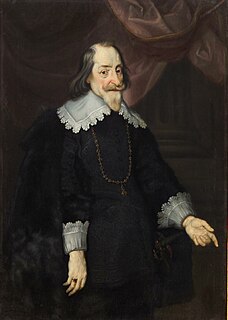
The Treaty of Fontainebleau was signed on 30 May 1631 during the Thirty Years' War, at the Palace of Fontainebleau. It was a pact of mutual assistance between Maximilian I, Elector of Bavaria, and France, for a period of eight years.

The Battle of Herbsthausen, also known as the Battle of Mergentheim, took place near Bad Mergentheim, in the modern German state of Baden-Württemberg. Fought on 5 May 1645, during the Thirty Years War, it featured a French army led by Turenne, defeated by a Bavarian force under Franz von Mercy.
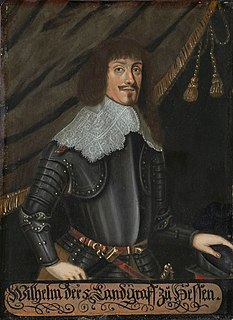
William V, a member of the House of Hesse, was Landgrave of Hesse-Kassel from 1627 to 1637. Having come to rule in unfavorable circumstances and in the midst of the Thirty Years' War, he continued to suffer losses of territory and wealth.

The Treaty of Stettin or Alliance of Stettin was the legal framework for the occupation of the Duchy of Pomerania by the Swedish Empire during the Thirty Years' War. Concluded on 25 August (O.S.) or 4 September 1630 (N.S.), it was predated to 10 July (O.S.) or 20 July 1630 (N.S.), the date of the Swedish Landing. Sweden assumed military control, and used the Pomeranian bridgehead for campaigns into Central and Southern Germany. After the death of the last Pomeranian duke in 1637, forces of the Holy Roman Empire invaded Pomerania to enforce Brandenburg's claims on succession, but they were defeated by Sweden in the ensuing battles. Some of the Pomeranian nobility had changed sides and supported Brandenburg. By the end of the war, the treaty was superseded by the Peace of Westphalia (1648) and the subsequent Treaty of Stettin (1653), when Pomerania was partitioned into a western, Swedish part, and an eastern, Brandenburgian part.
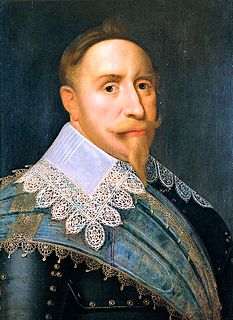
The Treaty of Bärwalde, signed on 23 January 1631, was an agreement by France to provide Sweden financial support, following its intervention in the Thirty Years' War.

The Battle of Frankfurt an der Oder on 13 April 1631 was a battle of the Thirty Years' War. It was fought between the Swedish Empire and the Holy Roman Empire for the strategically important, fortified Oder crossing Frankfurt an der Oder, Brandenburg, Germany.
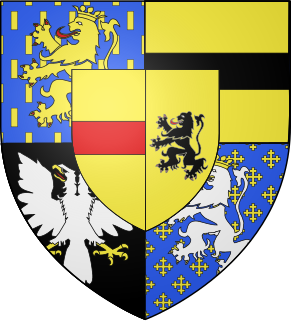
William Louis of Nassau-Saarbrücken, was a Count of Saarbrücken.
Count John of Nassau-Idstein was Count of Nassau and Protestant Regent of Idstein.

Gustavus Adolphus, also known in English as Gustav II Adolf or Gustav II Adolph, was King of Sweden from 1611 to 1632, and is credited for the rise of Sweden as a great European power. During his reign, Sweden became one of the primary military forces in Europe during the Thirty Years' War, helping to determine the political and religious balance of power in Europe. He was formally and posthumously given the name Gustavus Adolphus the Great by the Riksdag of the Estates in 1634.

The Treaty of Compiègne (1635), signed on 30 April 1635, was a mutual defence alliance between the Kingdom of France and Sweden.



















